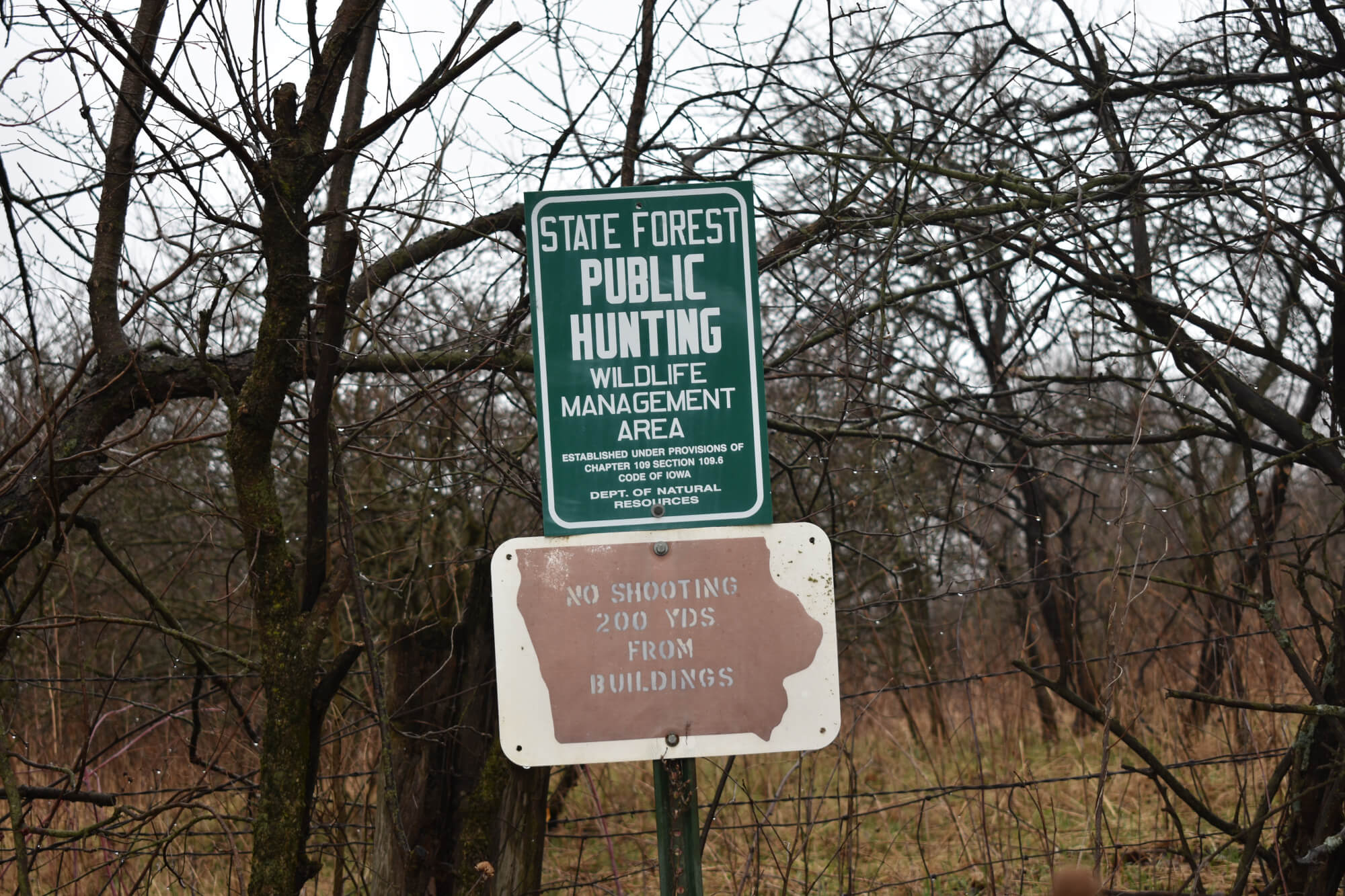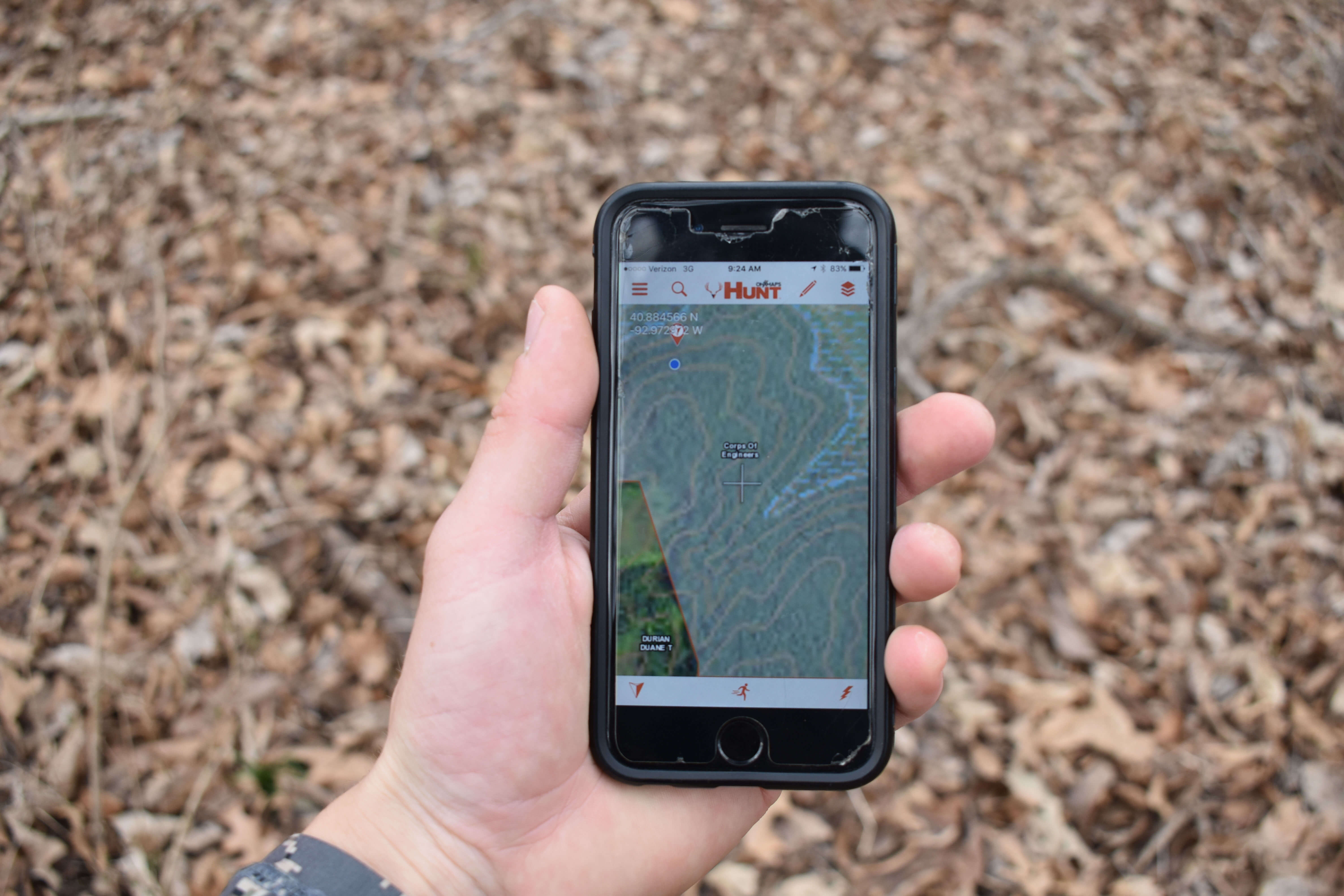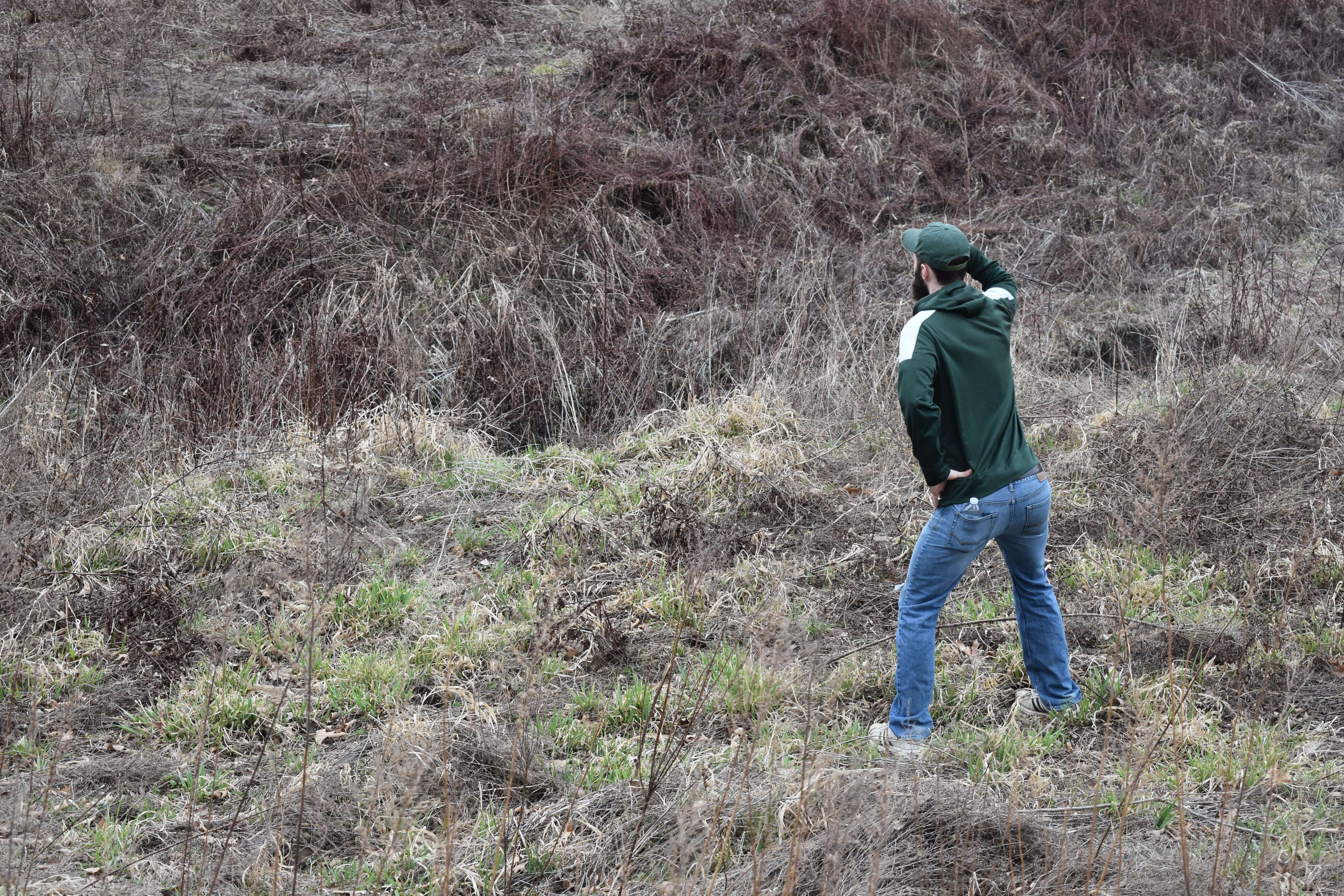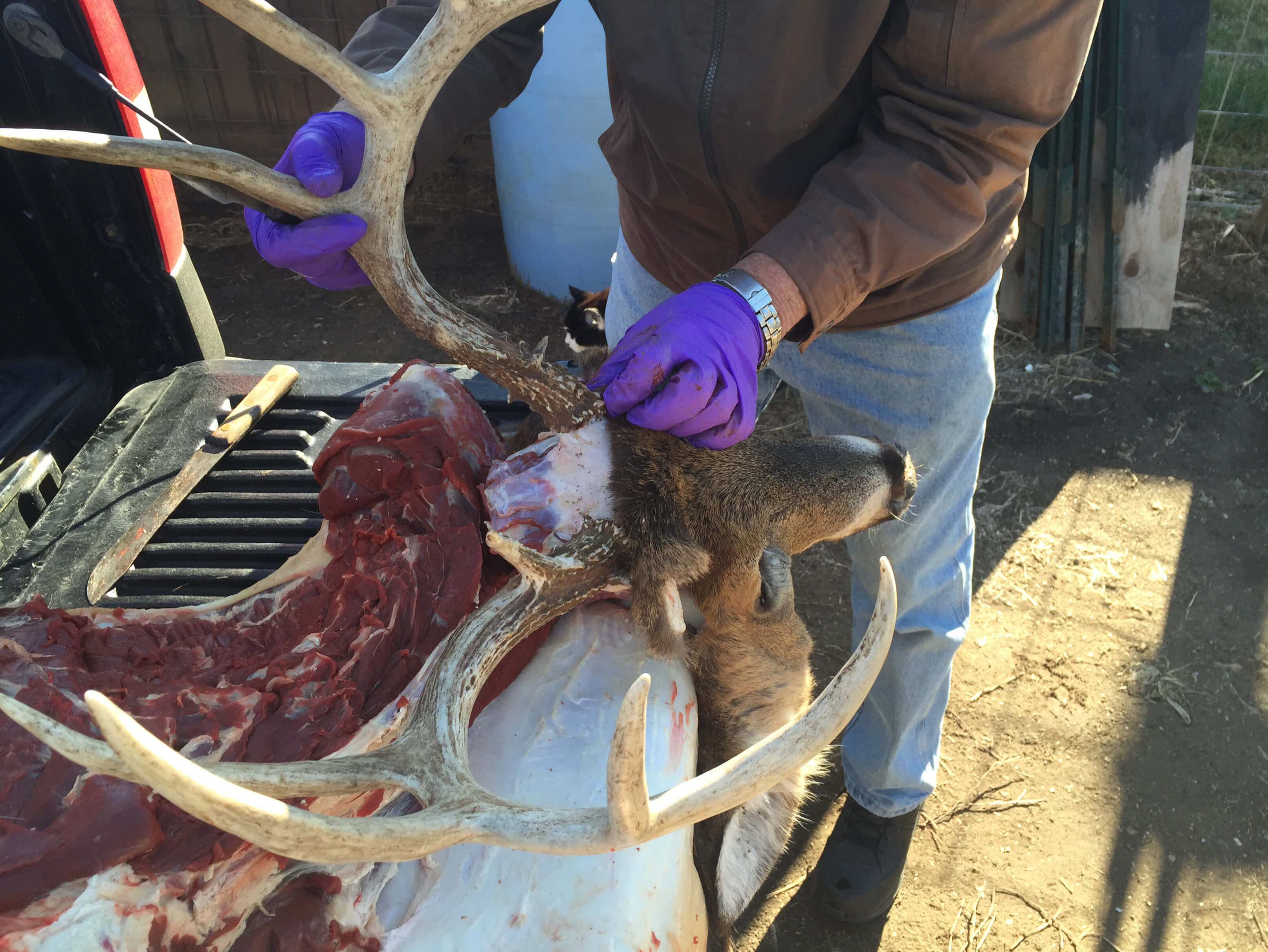transition wild
Off

Hunting is tough but hunting out of state adds an entirely different complexity to an already difficult situation. Joe Wilson enlightens us with valuable DIY hunting strategies for locating public land, digital scouting, scouting on foot upon arrival, and what to do after you shoot a deer. If you missed the first part of this article, make sure to read: The Clueless Midwestern Hunter’s Guide to Out of State Deer Hunting – Part 1 Enjoy! – AP
Welcome to part 2 on our series for planning and executing your cheap Midwestern whitetail hunt! In part 1, we described how to go about planning your hunt. Here in part 2, we will describe how to find land to hunt on and tips on being successful once you arrive.
At the end of each section I have added a Lazy Hunter TL;DR (too long; didn’t read) section. I realize this article is long and most people can’t get through it without a nap so I added this to summarize each portion. God bless America. Amirite?
So long as you don’t live off the grid, there are multiple ways to find public land. I have listed below the sites that detail public land for each state via the state agency’s websites (except Illinois, as the site I have shown is more user-friendly). Some are better than others but they are all a great starting point. Insider’s tip: Ohio has a number of different properties owned by coal companies and others that are open to public hunting. Kansas has a draw for special hunts on wildlife preserves within public ground. Be sure to check those out on each state’s site.
Iowa: https://programs.iowadnr.gov/maps/huntingatlas/default.html
Kansas: http://ksoutdoors.com/KDWPT-Info/Locations/Hunting-Fishing-Atlas/Fall-Hunting-Atlas
Kansas has what they refer to as the WIHA (Walk-in Hunting Access) Program in which the state leases private ground for public hunting use. These properties change year by year so be sure to get the updated Fall Hunting Atlas that will come out in late summer. Also, each parcel can have different restrictions on when and how you can hunt it so be sure to refer to those. From my experience, WIHA gets hunted much less than the other public ground.
Wisconsin: http://dnr.wi.gov/topic/Lands/PAL/
Ohio: http://wildlife.ohiodnr.gov/wildlifeareas
Indiana: http://www.in.gov/dnr/fishwild/5427.htm
Illinois: http://engineeredpursuit.com/illinois-public-hunting-areas/
You can also purchase apps for your phone/PC that will make it simple to find public ground and know when are on it via GPS location. I have personally only tried the onXmaps Hunt App (starts at $29.99 per year) and was impressed with what I saw. On top of easily showing public land, the map also shows you landowner names for private parcels as well as other features such as topo, roads & trails, and bodies of water.

onXmaps is an invaluable tool for the DIY public land deer hunter.
I am not going to go into a lot of detail on private for a couples reasons. 1. I have not had much luck obtaining access to hunt private ground. It can definitely be done but be ready for lots of rejection. 2. I enjoy the challenge of hunting public land and these states have plenty of it.
Lazy Hunter TL;DR: Go to the link for the state you want to find public land for. Try asking private owners for permission if you want to learn what rejection feels like.
When it comes to scouting, ideally you would spend a couple days walking these properties but in most cases, it is not possible due to distance. Therefore, I would suggest doing it online as much as you can using Google Earth or a similar type mapping program. I would tend to break up terrain types into two segments; hilly, big woods areas and open terrain.
To be honest, I have yet to have much success in the big woods areas like southern Ohio. So rather than claim to be the expert I am not, I will point you towards the experts. A great site for understanding how to hunt hilly terrain and big woods areas, among other things, is The Hunting Beast which is run by renowned public land hunter Dan Infalt. The site is full of talented hunters who will describe what they look for on properties. (Hint: analyze how the members on these sites utilize topography and cover. Also, understand what a Thermal Tunnel is. I highly recommend reading Brad Herndon’s book “Mapping Trophy Bucks.” He does a great job of describing what to look for in hilly areas by studying topographical maps. After you understand how to use topographical maps, you can find those Topo Maps online using or on your phone with apps such as Hunt GPS or onXmaps.
Lazy Hunter TL;DR: In hilly areas, find a saddle or cut between ridge points and hunt there, they are natural funnels.
As far as open terrain goes, I have found most success lies in the areas with any type of cover which mostly consists of creek bottoms. Topography can also play a role so still use similar tactics to hilly areas. Deer will most likely bed in the best available cover and move from there to feed. One type of terrain that is often overlooked is milo fields. On my last trip to Kansas, we saw four different shooter bucks in two days in a milo field that stretched a few hundred acres. The great thing about milo is that it is tall enough to make the deer feel secure but short enough that you can see antlers above it when the deer stand up.
Lazy Hunter TL;DR: In open terrain, deer like cover. Find the cover in open terrain.
Your first day, possibly two if your trip is more than a week, should be totally devoted to scouting as many properties as you can. In open country, this means plenty of driving around or sitting on a high point and glassing. In big woods country, you are going to have to do some walking and investigate areas you had found with your cyber scouting. If you enter an area and see fresh rut sign (specifically looking for scrapes in early November), you are in business. If not, move on to the next one. Any success I have had on my trips has been accompanied by seeing large rubs and multiple scrapes. If you are in a low deer density area during the rut, sticking near does can be a good secondary tactic.
Keep in mind you have plenty of land to hunt and you need to find where the big deer are. Spooking deer is not the end of the world and can even can let you know you are in the right area. After you find some areas worth hunting, hunt them but don’t get hung up on a spot just because it looks good. Move and keeping moving unless you are seeing mature bucks. I spoke with a fella that shot a 160-class buck on public land on his first trip to Iowa. He said his strategy is to never sit a stand more than once. He moves his stand after every sit. The wall of bucks in his house told me he knew what he was talking about.

Scouting public land means you will have to spend time walking parcels quickly and effectively. If the sign isn’t there, move on to the next piece.
One thing I notice regarding people that have consistent success is they look for areas where other hunters won’t be. The obvious choice would be to go at least a mile from the road but there are other ways of accomplishing this. Examples would be having to cross a river, climb up/down a steep ridge, or even just hunting close to the road. A good way to think is if you see a spot and your first thought is “that area would be a pain to access” or “there’s no way deer use that area” then that spot might be worth a sit.
The main point I would stress to someone going out of state for the first time is to not get frustrated. Yes, there are large bucks in these areas but they aren’t around every corner. You can go days without seeing a mature deer. Magazines and hunting shows have convinced us these states are deer farms and people feel they are doing something wrong if you aren’t always into the huge deer. You are hunting an area for the first time and it can take years to figure out the best spots. The most successful hunters I know all have one trait in common; persistency. Stay persistent and results will follow.
Lazy hunter TL;DR: Scout the first day you arrive. Keep moving until you find big bucks. Don’t hunt where other hunters are. Other hunters are dumb. Don’t give up.
One thing I didn’t realize until I shot a buck in Kansas is that many states do not allow transport of deer carcasses across state lines. For Michigan, you are not allowed to bring back any deer, elk, or moose from the following states: Arkansas, Colorado, Illinois, Iowa, Kansas, Maryland, Minnesota, Missouri, Nebraska, New Mexico, New York, North Dakota, Pennsylvania, South Dakota, Texas, Utah, Virginia, West Virginia, Wisconsin, Wyoming, Alberta, or Saskatchewan (Source: Michigan DNR). If outside of Michigan, it is best to check with your state game agency. They do this to limit the spread of diseases, mainly Chronic Wasting Disease (CWD). So I imagine some people think, “that isn’t a big deal, I will just quarter the meat and bring back the head.” Not so fast. In Michigan, you are only allowed to bring back “deboned meat, antlers, antlers attached to a skull cap cleaned of all brain and muscle tissue, hides, upper canine teeth, or a finished taxidermy mount.” (Source: http://www.michigan.gov/emergingdiseases/0,4579,7-186-25806-73145–,00.html) I learned this after shooting my buck and spent a lot of money getting the animal processed and caped because I wasn’t prepared. Bring a cooler, learn how to quarter and debone the animal, and learn how to cape if you want to get a mount done. See below for some helpful links:

Learning how to properly cape a deer is a good skill to have when hunting out of state. It will save you money and will ensure you are doing everything legally while transporting game.
If you are intimidated by caping your deer and afraid of screwing it up, call a taxidermist nearby and have him do it. Tip: When skinning around the antlers, use a flathead screwdriver to pry the skin off the antlers. Cutting with a knife can thin the hide.
Lazy hunter TL;DR: It’s a good idea to not transport your deer across state lines unless you want to lose your deer and get a sizeable fine. Learn to butcher and cape it yourself.
The last piece of advice I want to leave with you is to simply enjoy it. Hunting is supposed to be fun. Don’t let the pressure of wanting to shoot a big deer ruin the experience of getting to take in new scenery and how lucky you are to get to hunt in different areas. On my last trip to Kansas, I hunted hard all week with my father and brother. We had countless close calls with large bucks but none of us connected and it was still one of the best trips of my life. The memories made still bring a smile to my face and we are constantly reminiscing at family dinners about this trip. Not all days are created equal and most of them will pass with obscurity throughout our lives but with the right mindset, you will remember your trip with vivid details long after it is over.
Lazy hunter TL;DR: Go hunt out of state. You won’t regret it.